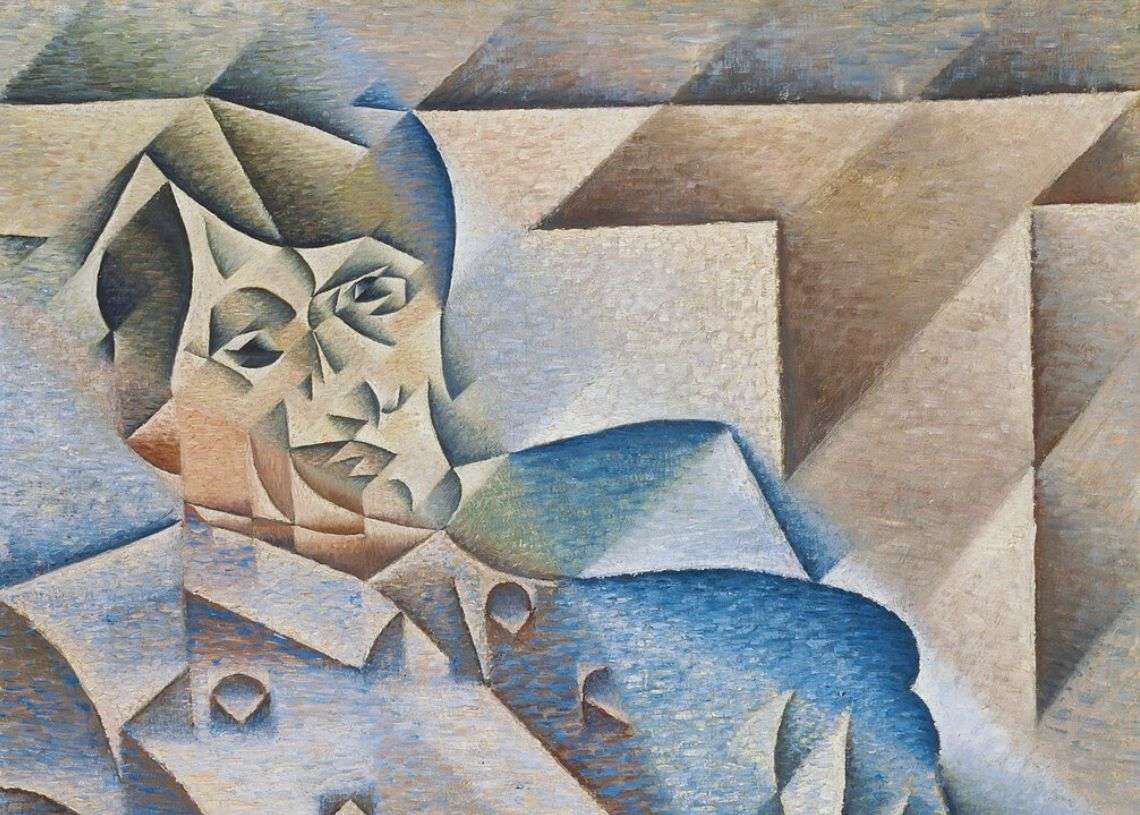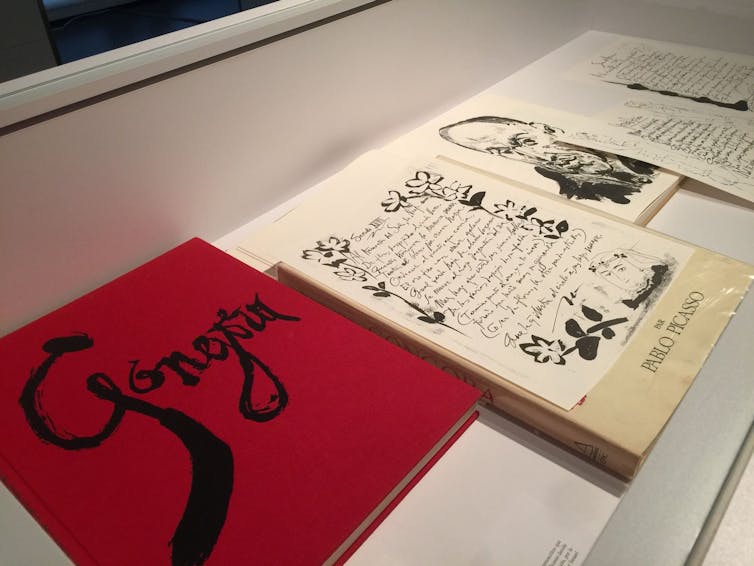By Sara Gonzalez-Angel, Sevilla University
Pablo Picasso was one of the few characters in history capable of becoming an icon and universal reference during his lifetime. Today, fifty years after his death, it is strange to find someone who does not know his name.
However, Picasso, father and executioner of Cubism, a painter of vast production, has also become part of the Western collective imagination just because of a painting and a striped T-shirt.
Much is unknown about the person, hidden by the character. Like for example, that the painter from Malaga also wrote poems, sometimes almost compulsively and using automatic writing. This helped him in times of artistic blockage and in his aesthetic and vital transitions.
Picasso’s texts are interesting for their aesthetic value and for their function within the artist’s work. They are also a source of information about the creative genius that has been overlooked throughout all these years.
picasso poet
Picasso began writing in the mid-30s and continued to do so, in French and Spanish, until 1959, when he signed his most finished work, piece of skina tribute to Góngora.
Accustomed to dating everything he wrote, his first poem seems to be from April 18, 1935. He begins it after the separation from Olga Khoklova, his first wife and mother of his firstborn.
The break ended with the physical and spiritual eviction of the painter, a painful situation for all those involved (Picasso himself, Olga, his son Paulo, and also for Marie-Thérèse Walter, about to give birth to the second daughter of Picasso, Maya). This will mean a pictorial and existential crisis for the artist.
At this time, Picasso is over fifty years old and is recognized for his pictorial innovations. But age, success and the certainty that he may never be able to return to Spain inevitably distance him from his Andalusian roots, so valuable to him because they link him to his childhood and his family.
This distancing begins as a purely emotional or intellectual perception but, after the Civil War and the establishment of the dictatorship, it becomes something imposed, physical and real.
At first, Picasso writes as a game, a diversion to escape the headaches of divorce and new parenthood. But he soon begins to realize that he is no longer a child and that he is not going to have that traditional Andalusian family that his parents did. He needs to digest this circumstance through art and there is no art that lends itself more to reflection than literature.

Overlap space and time
As John Berger tells, the artist is isolated from the world and absorbed in his identity crises, dealing with a deep loneliness. The artistic block that he suffered could only be solved by going further in his art. This means changing the means of expression.
Through writing, Picasso becomes aware that reality is not as he had planned and he cannot stop feeling alone, so he seeks refuge. In this way, he creates in his texts a space-time where he can let his roots grow. The poems become a kind of surreal and Andalusian mental palace.
This simultaneous superimposition of the planes of space and time, known as chronotopedoes not coincide with the abstraction that is made in painting, a predominantly spatial art.
The image –space– combined with literature –time– and crystallized in the lyric –the perfect genre for the recreation of the moment– are presented as the ideal way to express the message that (concerns) the artist. The three dimensions are woven into Picasso’s literature: space, time and emotion.
So, having neither a time nor a space in which to put down roots, but determined to have them, the man from Malaga dedicates himself to creating and creating himself. He is included in a canon of Hispanic geniuses to whom he can speak of “tú”, as he would have liked to have been able to do in person.

The Golden Age and the sentimental canon in texts
Antonio Morón Espinosa writes that literature is always “a remnant of memory”. If literature and art are part of memory, then they are likely to become literary material, passing through the filter of memory and turned into elements of the imagination.
It is precisely for this reasoning that one must look for El Greco and his lord of Orgaz, Velázquez, his meninas, Goya, Góngora and his Polifemo, Don Quixote, among the characters who parade through the Andalusian universe that Picasso creates .
Everything he wanted and left behind, together with his native land, merges in these great teachers. That is why he titles his most important poems alluding to them (The burial of Orgazwhich is published illustrated by Picasso himself, or piece of skin, which alludes to the common metaphor that the map of Spain has the shape of a bull’s skin). In his literature there is no room for logic but for emotion and the affective.
The function of literature for the Malaga native is always cathartic and evocative: the poems suggest and recall scenes from childhood and youth, recreate smells, flavors and vague memories of the Malaga where he spent the first years of his life, of La A Coruña, Barcelona and even the Paris of the end of the century.
In fact, the best example for this statement is the beginning of his first poem:
“And tell me that you know, tell me if it could be that this afternoon the wet memory of her face still rains on me and the gray of the sky melts into the green of the tree. And tell me if one day I will be able to grasp the fingers that the sun will pass through the blind in the morning, when I wake up near the Mediterranean Sea, and the smell of coffee and toasted bread, that, although I come from afar, I am a child and I feel like eating and swimming in salt water.”
As I have tried to explain, the poet Picasso was the most intimate. In them he undressed the disguise of the genius of painting and allowed himself to be what he was beyond and before that: an exile who did not belong to that space or to that time, but to another that he had left behind.
He lived his entry into the timelessness that the canon grants, and in the solitude of success he was reunited with Velázquez, with Góngora and with El Greco in his ascension. He was therefore linked to them in a way that transcends the artistic and leads directly to the intimate and emotional.![]()
Sara Gonzalez-AngelPhD in Spanish Literature and Professor in the Department of Art History, Sevilla University
This article was originally published on The Conversation. read the original.











